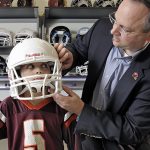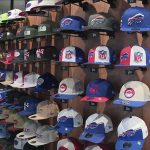According to the National Retail Federations 2007 Consumer Intentions and Actions Back-to-School survey, conducted by BIGresearch, families with school-age children are expected to spend $563.49 on back-to-school merchandise, up 6.9% from last years $527.08 average. At this rate, total back-to-school spending this year should reach $18.4 billion.
According to the survey, the electronics category will see the biggest increase in sales this year, with families spending 13.0% more on electronics than last year ($129.24 vs. $114.38). Footwear will also see a higher-than-average sales increase, with sales expected to rise 10.3% over last year ($108.42 vs. $98.34). Families are also expected to spend $94.02 on school supplies, up from $86.22 a year ago.
Though the majority of shoppers will be purchasing clothing and accessories this year (95.4%), spending in that category is expected to be flat, with consumers spending an average of $231.80 on those purchases, similar to last years $228.14. Clothing and accessories remains the largest spending category at $7.6 billion.
“Electronics have evolved from luxuries to necessities, not only for college students but also for their younger siblings,” said NRF president and CEO Tracy Mullin. “While some students may be pleading with mom and dad for an iPod or a cell phone, parents are also investing in desktop or laptop computers, educational software and printers to support their childrens learning.”
As the Internet continues to integrate itself into traditional shopping, more parents will head online for back-to-school items this year. The percentage of parents who plan to purchase merchandise online this year is expected to rise 40.8%, from 15.2% last year to 21.4% this year. Young parents between the ages of 18-34 are the most likely to shop online for childrens merchandise, with nearly one-third of them planning to use the web to find back-to-school items.
Though discounters will remain the most popular destination for back-to-school shopping, fewer consumers plan to hit mass merchants this year, with 67.6% of parents planning to shop at discount stores compared with 72.2% last year. All other categories are expected to see traffic increase, as consumers will be shopping more at office supplies stores (41.4% vs. 35.8% last year), drug stores (17.9% vs. 16.3%), department stores (54.9% vs. 53.3%) and specialty stores (31.6% vs. 30.9%).
Pre-teens and teenagers will be pulling out their own wallets for back-to-school this year. According to the survey, parents say pre-teens will chip in approximately $15.38 of their own money for back-to-school items while teenagers will spend, on average, $31.19 of their own money. And even if theyre not spending the most, they have quite a say in what is bought: nearly two-thirds of parents say their children influence at least half of the items that are purchased for back-to-school.
“Pre-teens and teenagers have a tremendous impact on their familys spending decisions,” said Phil Rist, VP of strategy for BIGresearch. “From backpacks to boots, parents often let their children choose which specific items to purchase, so retailers will be marketing as much to kids as to their parents this year.”
The timing of back-to-school shopping is expected to be consistent with previous years. The majority of consumers (45.2%) plan to begin their shopping three weeks to one month before school starts. 32% will begin one to two weeks before, 14.6% will begin at least two months before the start of school and 5.4% will wait until the week before school begins. Only 2.7% will procrastinate until after school starts to do their shopping.









